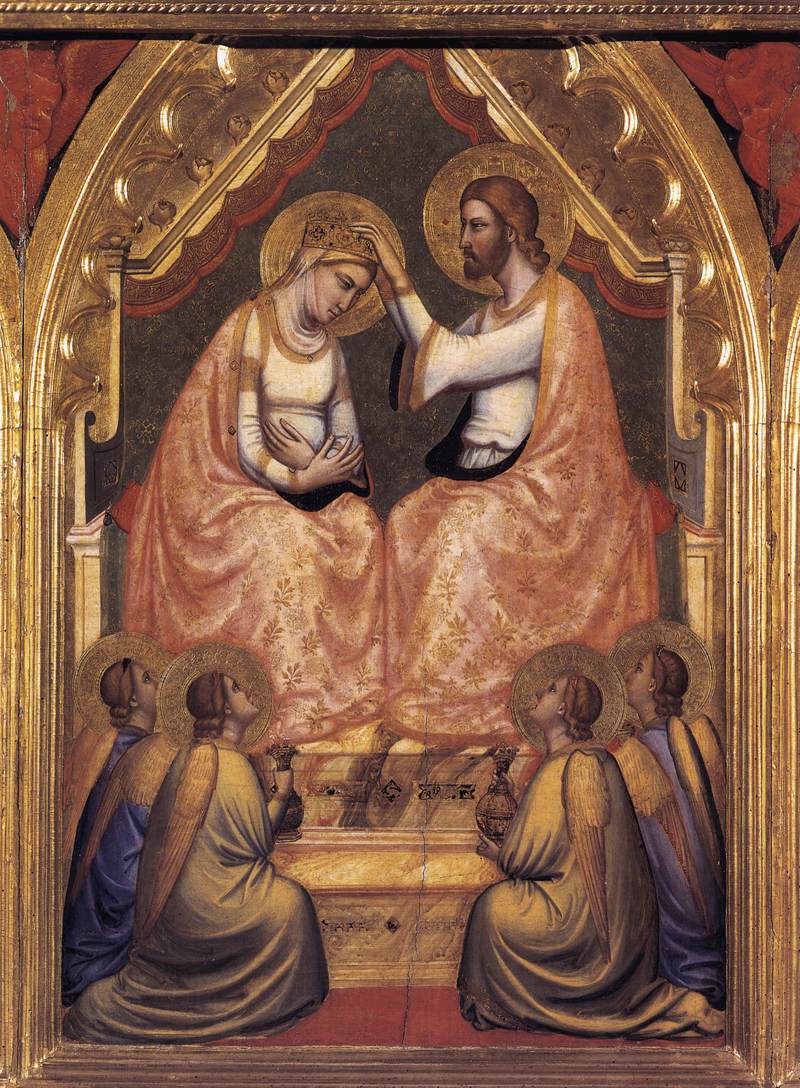As an early
Renaissance artist, Giotto (1266-1337) gained prestige as a fresco painter, adhering
to a naturalistic style of painting and depicting realistic human expression
(Zophy 88). Although Giotto is known for his portrayals of Saint Francis of
Assisi, I will focus on the piece of art at the center of the Baroncelli
Polyptych, which is the Coronation of the Virgin. This particular piece
was intended as an altarpiece for a church in Florence, commissioned by the
Baroncelli family and completed in 1334, late in Giotto's life (wga.hu). This contextual aspect of the
work demonstrates the interconnectedness of church and state (or at the least,
the ruling class) in terms of power during the period. The family reinforced
their own position in Florence through the chapel and their provision of
adornments for it- hence the altarpiece. However, the painting itself does not
seem to reflect anything remarkably secular, other than the general regality of
appearance. Overall, the painting depicts a spiritual scene, one framed by
artistic aims of naturalism, order, and unity.
In
particular, one can observe the unique sense of naturalism that Giotto infused
in the Coronation of the Virgin. For one, the artist utilizes a
relatively soft palette of colors, even if the hints of red and the predominant
scheme of gold sets up the importance of the scene. The angels, far from otherworldly,
appear rather ordinary, brown hair modestly arranged, and clothes merely
consisting of simple robes of one color. In fact, their wings attract little
attention, folded neatly back and only a soft gold. Jesus and Mary both appear in white.
Interestingly, Mary is perhaps depicted more modestly than typical, with both
neck and hair covered, which may be a reflection of matronly status. The most
ornate items in the painting are the crown being placed on Mary’s head and the
pink/gold patterned fabric wrapped around the two. In general, all the figures
in this centerpiece of the Polyptych give a sense of earthly solidness, perhaps
indicative of both Giotto’s style and the connection between earth and heaven. In
addition, the viewer does have some sense of depth, which Giotto was pioneering
in for the period, especially given the perception of distance between the angels
and the seated Mary and Jesus (Zophy 88). In terms of gender, it is interesting
that Jesus and Mary are both seated and on an equal level, if Mary’s head is
still lowered in order to receive the crown. Overall, this painting and its
context indicate the importance of religion, the prominence of frescoes, and the
secular influence on art in a way that illuminates the culture of the time
period.

Sources:
Zophy, Jonathan W. A Short History of Renaissance and Reformation Europe. Prentice Hall, 2009. Print.
